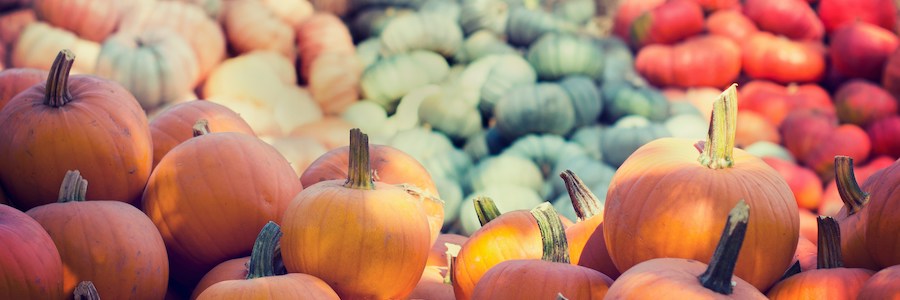Pumpkins, an iconic symbol of the autumn or fall season and central to America’s Halloween and Thanksgiving traditions, have long been a part of California’s agricultural story. While their historical roots in the Americas date back thousands of years, the journey of pumpkin cultivation in California specifically reflects the state’s rich and evolving agricultural landscape. From the practices of Native Americans to the commercialization of pumpkin farms today, the history of pumpkin growing in California weaves together cultural, environmental, and economic influences.
Pre-Colonial and Indigenous Pumpkin Cultivation
Long before European settlers arrived in California, Native American tribes across the continent cultivated pumpkins, along with other squash and maize.
Pumpkins are believed to have originated in Central America, with archaeological evidence suggesting they were cultivated as early as 7,500 BC. By the time indigenous people began growing them in what is now California, they were already a staple crop, valued for their versatility and ability to store through the winter months.
In California, Native American groups like the Miwok, Yokut, and Chumash used pumpkins and other types of squash as part of their subsistence farming. Pumpkins were often grown alongside beans and maize, in a symbiotic planting system known as the “Three Sisters,” which was a common agricultural technique among indigenous cultures. The pumpkins’ broad leaves helped protect the soil from erosion and retained moisture, while the other crops provided structural and nutrient benefits.
For the Native Californians, pumpkins were not just a source of food but also had other uses. The seeds were ground into flour or eaten raw, and the flesh was either cooked or dried for storage. The hard outer shells were used as containers or bowls, a testament to their multifunctionality.
The Spanish Mission Era: Introduction of European Agricultural Practices
The arrival of Spanish missionaries in the late 18th century marked a significant change in California’s agricultural landscape. The Spanish introduced many European farming techniques and crops, establishing large mission farms across the state. While pumpkins were not a crop native to Europe, they had been embraced by the Spanish in the Americas after their introduction from indigenous cultivation practices.
Pumpkins and other squash varieties were grown in mission gardens and farms, often to supplement the diets of both the missionaries and the Native Americans who worked on these farms. Pumpkins became integrated into the broader Spanish colonial agricultural system, where they were used both for human consumption and as feed for livestock. The Mediterranean climate of coastal California, with its mild, wet winters and dry summers, was ideal for the cultivation of pumpkins, which need a long, warm growing season.
The Gold Rush and Agricultural Expansion
The mid-19th century brought another significant shift to California’s agricultural landscape with the discovery of gold in 1848. The subsequent Gold Rush brought hundreds of thousands of people to California, rapidly increasing the demand for food. The agricultural boom that followed saw pumpkins becoming a more prominent crop as settlers expanded farming into fertile regions like the Central Valley.
Pumpkins, being relatively easy to grow and highly adaptable to different soil conditions, became a valuable crop during this time. Farmers recognized their potential both as a food source and for livestock feed. The ability of pumpkins to grow in diverse conditions made them a popular choice, especially in areas where water was more limited.
As California’s agricultural industry grew, pumpkins became a staple not only in local markets but also in the burgeoning canning industry. Canned pumpkin began to gain popularity during the late 19th century, providing a longer shelf life for the product and making it available year-round.
20th Century: Rise of Commercial Pumpkin Farming
By the early 20th century, pumpkin cultivation in California had expanded considerably, partly due to the increasing popularity of Halloween and the tradition of carving jack-o’-lanterns. Halloween, with its emphasis on pumpkin carving, brought a surge in demand for ornamental pumpkins, creating a new market for California farmers. At the same time, the Thanksgiving tradition of pumpkin pie solidified pumpkins as a household staple in fall cuisine.

Advances in farming technology, irrigation, and the development of hybrid pumpkin varieties allowed California farmers to grow pumpkins more efficiently and in larger quantities. The Central Valley, with its expansive farmland and optimal growing conditions, became the epicenter of pumpkin cultivation in the state. Farmers also began experimenting with different pumpkin varieties, from smaller sugar pumpkins for cooking to larger varieties ideal for carving.
The rise of agritourism in the latter half of the 20th century also contributed to the growth of pumpkin farming in California. Pumpkin patches became popular fall destinations for families, offering hayrides, corn mazes, and pick-your-own-pumpkin experiences. Many farmers embraced these opportunities as a way to diversify their income and attract visitors during the harvest season.
Half Moon Bay: California’s Pumpkin Capital
One of the most famous places associated with pumpkin growing in California is Half Moon Bay, a coastal city just south of San Francisco. Known as the “Pumpkin Capital of the World,” Half Moon Bay has hosted an annual pumpkin festival since 1971. This event draws tens of thousands of visitors each October to celebrate the pumpkin harvest and features a pumpkin weigh-off where farmers compete to grow the largest pumpkins.
The Half Moon Bay Art and Pumpkin Festival, which happens this month on October 19-20, has become a cultural phenomenon, reflecting California’s deep connection to pumpkin growing. Some pumpkins in the competition weigh over a ton, with farmers using specialized growing techniques to nurture these enormous gourds. The festival also serves as a celebration of California’s agricultural heritage and the role that pumpkins play in the state’s economy and culture.
California as a Leading Pumpkin Producer
Today, California is one of the top pumpkin-producing states in the U.S., alongside Illinois (the leading pumpkin-producing state), Indiana, Michigan, Pennsylvania, Virginia and Texas. Nearly every U.S. state produces some pumpkins but these seven states produce more than half of them by weight, according to the USDA Census of Agriculture.
California produces millions of pumpkins each year, with a significant portion grown in the Central Valley and coastal regions like Half Moon Bay. California’s ideal growing conditions, including its warm climate and fertile soil, allow for a long growing season, making it possible for farmers to supply pumpkins for both the ornamental and culinary markets.
Pumpkin farming remains a vital part of California’s agricultural economy, especially in the fall when the demand for pumpkins peaks. The state’s farmers continue to innovate, producing new pumpkin varieties and adopting sustainable farming practices to meet the challenges of climate change and water scarcity.
The history of pumpkin growing in California is a rich tapestry that reflects the state’s agricultural diversity and adaptability. From the indigenous peoples who first cultivated pumpkins to the Spanish missionaries, Gold Rush farmers, and modern agribusinesses, pumpkins have played an integral role in California’s agricultural development. Today, pumpkins remain a symbol of the fall season and a testament to the enduring importance of agriculture in the Golden State.
My Job Depends on Ag Magazine columnist and contributing editor Victor Martino is an agrifood industry consultant, entrepreneur and writer. One of his passions and current projects is working with farmers who want to develop their own branded food products. You can contact him at: [email protected].

California-Grown Pumpkins
California is one of the six top pumpkin-growing states in the US. Its farmers grow about 27,500 pounds of pumpkins per acre, according to USDA data. As a comparison, Illinois, the top pumpkin-producing state, grows about 37,500 pounds of pumpkins per acre.
The majority of pumpkins grown in California are for ornamental uses – jack-o’-lantern pumpkins for Halloween – but the state’s farmers also grow pumpkins for eating, which are often called pie pumpkins, sugar pumpkins, or sweet pumpkins. These pumpkins are primarily canned by processors or made into frozen pumpkin pies, which are a holiday dinner dessert staple this time of year.
These are some of the most popular pumpkin varieties grown in California:
- Jack-o’-lantern: A traditional variety, but newer cultivars have been developed with improved color, size, and consistency. Some of these include Aladdin,
- Gladiator, Magic Lantern, Magic Wand, and Spartan. Winter Luxury, Cinnamon Girl, and New England Pie: These are flavorful varieties that are good for cooking.
- Big Max: A popular choice for carving, this pumpkin can weigh 50–100 pounds.
- Cinderella: This flattened, deep red-orange pumpkin is good for cooking and baking, and weighs around 20–25 pounds.
- Small Sugar: This classic choice for pumpkin pies weighs around 5–6 pounds.
- Baby Bear and Bushkin: These bush pumpkins are good for growing in containers, and their sweet flesh is great for baking.
- Dill’s Atlantic Giant: This mammoth type of pumpkin can weigh 400–500 pounds or more, but it’s actually a winter squash, not a true pumpkin.
- Japanese Kabocha: This variety is more drought-resistant than most pumpkins, making it a good choice for arid climates.







